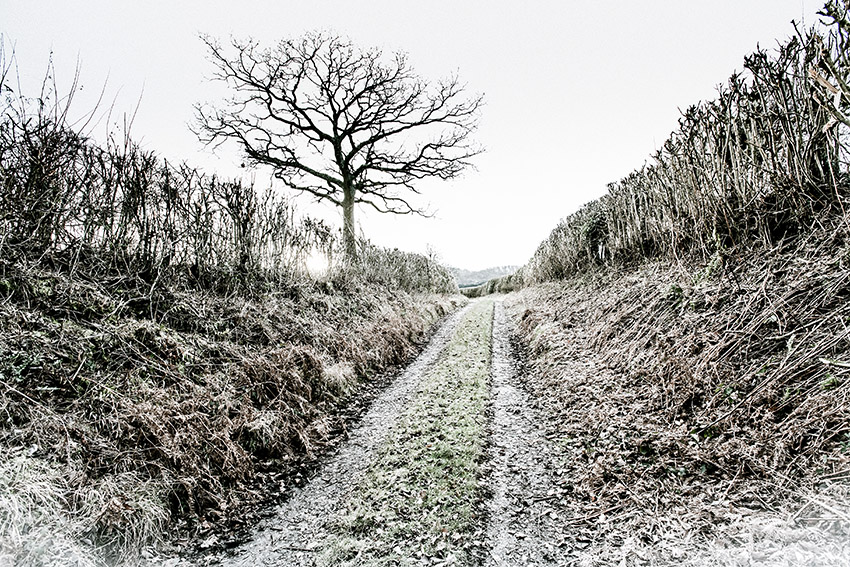
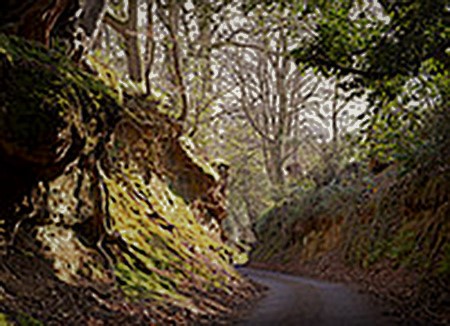 Set off on a good Sunday afternoon walk through the downland around here, along the old byways and bridleways, and you may well find part of your route follows a “hola weg” or sunken lane. These are well named from the Anglo-Saxon word which suggests a hole, hollow, cavern or den. They can be sunk some 12ft below field level and tend to be in southern England where the stone is soft. As part of an essential rural network whether for people, animals or vehicles, and even though some may now have been adapted to become tarmacked roads, they record repeated steps and journeys often over many centuries.
Set off on a good Sunday afternoon walk through the downland around here, along the old byways and bridleways, and you may well find part of your route follows a “hola weg” or sunken lane. These are well named from the Anglo-Saxon word which suggests a hole, hollow, cavern or den. They can be sunk some 12ft below field level and tend to be in southern England where the stone is soft. As part of an essential rural network whether for people, animals or vehicles, and even though some may now have been adapted to become tarmacked roads, they record repeated steps and journeys often over many centuries.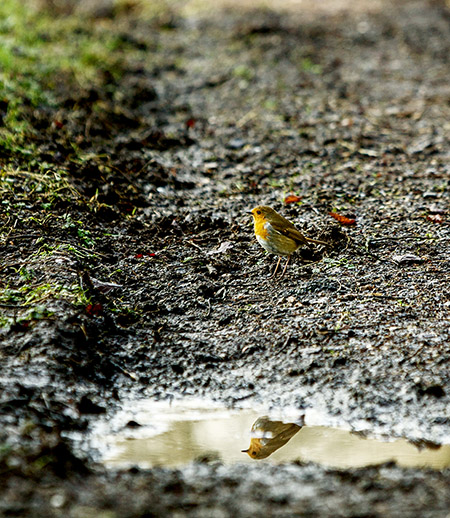
Trees grow out of the high banks curving up either side, bending to form a gently moving lattice overhead, branches touching side to side, like a moving green tunnel. Looking up at the bank on some hollow ways the trunks are huge, with wide roots running thickly down banks. Other paler lighter trees have tangled, twisted root structures, curling round on themselves with moss and damp deep green ferns occupying corners. The water run off can force different courses through the bank, creating secret, small tunnels.
 These old paths have a lot of appeal in nastier winter weather given they offer a modicum shelter to those walking today just as they did thousands before whether they be agricultural workers, pilgrims or other travellers. Yet the obscure green light filtering through can impart very different moods and feelings. They can also be quite wet and their antiquity suggests a wildness and a perfect place for spirits and ghosts to lurk. It can be a twilight scary world full of imagination or of robbers or highway men about to leap out.
These old paths have a lot of appeal in nastier winter weather given they offer a modicum shelter to those walking today just as they did thousands before whether they be agricultural workers, pilgrims or other travellers. Yet the obscure green light filtering through can impart very different moods and feelings. They can also be quite wet and their antiquity suggests a wildness and a perfect place for spirits and ghosts to lurk. It can be a twilight scary world full of imagination or of robbers or highway men about to leap out.
Landscapes thus become an archive without words. The much admired and discussed poet TS Eliot often drew inspiration from the UK’s ancient landscape and literary heritage. One of his most quoted poems is “The Hollow Men” first published ninety-five years ago in 1925. As with many of his poems, it is about a journey and different perspectives and it was written post World War 1. Perhaps the title and theme was a reference to making our own hollow ways in the snaking trenches of the Somme: less mysterious, even wetter but even more full of ghosts.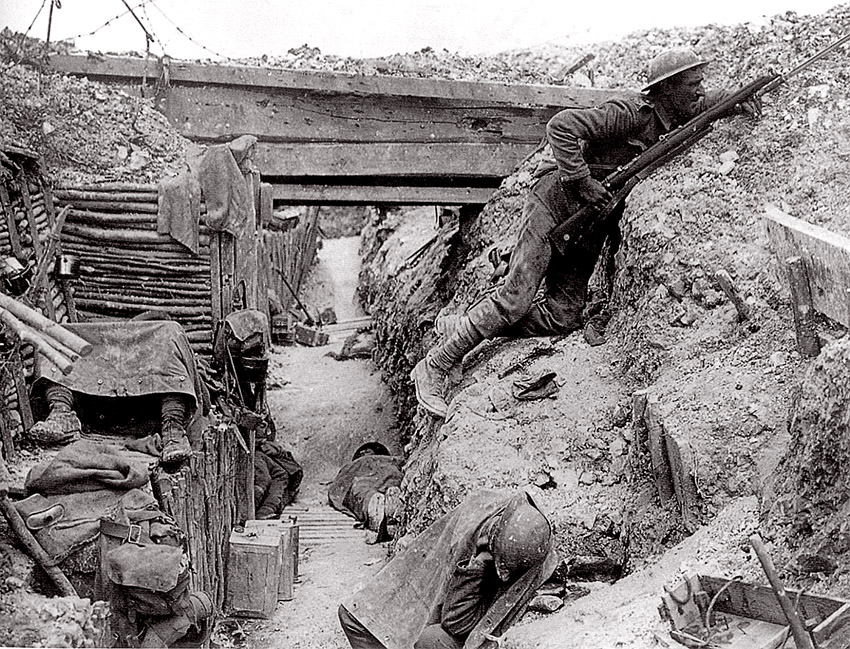
The Hollow men are in some kind of limbo, trapped with no identity, struggling to maintain hope. Not an entirely happy poem but it was not an entirely happy time. When you hollow out something, you can lose or risk its strength, whether scooping it out physically or through continually undermining its positivity.
Recent history seems to show us the consequences of “hollowing” out nature and our environment throughout much of the world whilst, certainly in this country, it seems we may have hollowed out many of our best institutions as well. It has been a torrid year with all we hold dear broken apart and countries, families and communities isolated as we try to find our principals and the way to travel.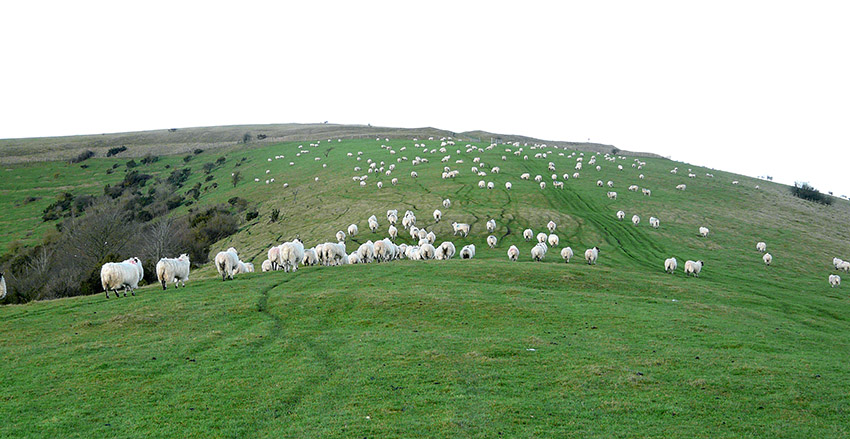
The news of a vaccine is so heartening and will, for sure, contribute a large part of the medium-term answer. Part of the answer that has helped us, short term and will helps us long term, is to be outside and taking the time to look, to find the harmony; not to hollow out but to follow the hollow ways from time to time.








 Instagram
Instagram
Thank you Lady Carnarvon, that was very interesting, as alwaysI’m hoping to come & visit Highclere again on 11th December, fingers crossed(Birthday present from my daughter)
Yours,
Caroline
I hope to see you
So beautiful and interesting., and again I love your blog.
Good Morning Lady Carnarvon,
The land surrounding Highclere is so beautiful and steeped in history, which I love. It’s fun to imagine the people who have walked these paths and wonder about their lives and where they were headed. Thank you for sharing your wonderful world with us.
As an aside, I love your instagram posts as well!
Have a wonderful day,
Pamela Oates
Thank you ! I am enjoying my 11am what we are doing and what to do posts
Your messages/blogs are so beautifully written. They draw me in, walking the paths like I am there. You transport us through adventures, stories, or even spots of history lessons.
Thank you for your words 🙂
~Jody B
Thank you – I have been drawn back to TS Eliot who I never really “got” at school but with age and experience I enjoy ever more.
Thank you, a very deep article. It makes you think.
Beautifully written as always. Do you take your own photos that go along with this blog? They are wonderful.
They are a mixture – the top one is taken by a friend who walked miles around the estate for me in order to include in my Christmas book. I wanted the elemental nature of the landscape
You convey your thoughts so beautifully. They are a joy to read and re-read. Thank you for sharing your wonderful gift.
So lovely to read your article, we are lucky to live in wonderful Hampshire, I am in the New Forest, enjoy walking my Border Terrier around the Forest. Visited your beautiful castle in July after lockdown. Fabulous day and thank you, staff were so helpful and friendly.
Thank you they are a great team!
Beautifully said.
Dear Lady Carnarvon,
Your text and photos are beautiful and haunting.
My grandfather fought in the U.S. Army in WWI. He was assigned to an ammunition train and the photo of the man in the trench would have been a familiar sight to him.
Regards,
Marla
They went through WW1 and then the flu …
I love reading you blog! Thank you for your calm and reassuring words.
Hello from Oregon!
Beautifully written! I could almost feel the dampness of the path. Though these trying times are forging new paths for us, I remain in hope. Be well. We will preserve.
Lorrie
It is very peaceful walking in other’s footsteps – they turned the corner but actually never stopped walking.
What a beautiful metaphor, dear lady Carnarvon! Thank you.
Elizabeth
Dear Lady Carnarvon,
thank you for another wonderful blog. Growing up in Sussex, the trip to school included a road through West Chiltington, which was a hollow road, and which was my favourite part of the journey, as it was so beautiful and mysterious, unlike the trenches of WW1 which were appalling. The part of the poem which reads
“Between the conception
And the Creation
Between the emotion
And the Response
Falls the Shadow”
I think we are in a sort of shadow now, although an accidental one and not one of an aggressor; now just waiting for the shadow to lift.
Jane
Thank you – that is beautiful
Lady Carnarvon,
A thoughtful post this morning – thank you. We so need a ‘cure,’ as the hoped for vaccine will provide, especially for front-line workers.
And the hollows – as a child I loved to wander in small near-by forests following the creeks and the hovering trees, and the scent of the woods. Thanks for the memories!
Martha G.
Thank you so much for this….
It is indeed a sad time for us all yet there is hope.
Take care and again hank you for this blog.
Kathleen
Barrie Ontario Canada.
Love your posts. Heartening in these times.
A very introspective and philosophical post today
Especially your last sentence
Thank you
Good Morning ,
Lovely to walk the , hollow ways with your imagery & add TS Eliot bring our New England fall to mind .
Ancient ways prevail in the silence of the stones and ground walked by beast of hoof or shoe
Thank you ,
E. B.
I love learning new things. Hollow Ways……can conjure up several images as you have so well described. Good one Lady Carnarvon.
This is a brilliant and beautiful meditation. Thank you, Lady Carnarvon.
When in England I love walking along the hollow ways and have experienced the different seasons, hence the atmospheric feelings that arise and sometimes I do think I’ve encountered a spirit! I have also had some moments of utter joy as I have had the happy occasion of seeing animals and birds. I love your photos and thank you for sharing TS Eliot’s poem. Sad times, but also reflective of the state of the world like today.
Lady Carnarvon,
Your writing this morning kept me glued to every word. You have such a way with words, revealing deep insights, a well rounded view of life, lessons from history, a fine command of poetry and pose, and such a thought-provoking marriage of all of it together. Your photos are stunning and fit what you are writing about so well.
Thank you for preparing this blog each and every Monday morning. The time, research and effort are much appreciated. I look forward to waking up each week, having my devotions and reading your blog with my cup of coffee at my computer. It’s such a beautiful way to start the week.
The many pictures we took when we visited Highclere in 2018(some framed and hanging on our walls)and your blog are like bookends that grace our home.
Your family is in our thoughts.
Cherie
La Mesa, California
Thank you Cherie. I do enjoy writing them and they are a discipline. I am grateful, every day, for my parents’ encouragement and fundamental value they attributed to reading and studying
I forgot to say our favorite is near where our canal boat is moored, called the Middleton Way. You can walk either way and it parallels the Macclesfield Canal in Cheshire. It’s a beautiful walkway/bridleway. Many people enjoy it daily.
Good morning Lady Carnavon,
What an amazing story of these byways. One can only imagine the history these could tell, filled with stories of the ages with intrigue, battles of people long ago, and the daily lives of other. Thank you for you wonderful stories.
Thank you, Lady Carnarvon, for brightening my Monday mornings with your musings. I admire that you can take an idea, a word, even a view, and expand on it with a thoughtful essay, always a joy to read. I especially like the bits of history you include, today about the “hola weg” I will never read or hear the word “hollow” again without thinking of the various references and connotations you mentioned this morning!
Pamela Jackson
Fort Worth, Texas
Thank you – I love the old languages, our current words derived from their life.
Greetings from Fort Worth, TX. Whenever we feel lost, there will always be a hola weg, if we search for the road we must take. Along the way, use the old haha’s for directions, instead of fences. I can smell the damp earth and woods, muted birdsong, and feel peace. Since I am of Irish and Scottish heritage, I find myself at times wondering if the little people are watching me, and hoping they are friendly. There are things in this world that cannot be explained and my imagination soars, as though I am 10 instead of 70. Thank you for sharing your life.
Good morning from a Houston suburb. We are so lucky to have your writing to start the week. I had never heard of a “hola weg” until today. And Somehow your pictures are completely evocative.
As you know, we have had a very disruptive few weeks here in the US, but your Monday postings bring calm and peace. Some of us look forward to filling in the hollows this coming 2021 with norms, traditions, people we love, and a new morning in America.
Please have a Happy Christmas and continue to stay safe. Blessings upon you and your family and friends and of course, Highclerc itself and all who shelter there.
Holly Rigby
Thank you – we are all well
Dear Lady Carnarvon:
Thank you again for another mystical trip down history’s byways. I hated history in high school but cannot get enough of it now in my early senior years. You not only teach us things we didn’t know before but you share with the most fascinating writing style. As a previous writer above said,
You transport us. And we ALL need transporting these days. Thank you.
Thank you for enjoying the “Monday Club”!
Good morning. Memories of my childhood explorations bubbled up as I read your musings. Thank you for addressing such a tender issue for so many people. I’ve focused on staying safe this year of the Pandemic. We’ve also had a horrific hurricane season with power outages, flooding, and great losses. Other geographic areas have had disasters of catastrophic devastation. So many people are feeling hollowed-out and angry.
This will be the story passed down through the culture.
Dear Lady Carnarvon:
Your Monday blog and photographs could not be more timely.
High winds and the “witch of November” came through Dearborn (Michigan) yesterday. It has left this residence without power and heat. So to some extent, and at this moment, I am experiencing a form of “hollow”. Strange as it seems, I had to take a drive in order to charge my cellphone, so that I could write this message to you. Hope for restoration later today.
Until next Monday, remain healthy and safe.
Perpetua Crawford
P.S. I have been enjoying the daily Instagram presentations.
Thank you – and thank you for taking the drive!!!
Beautifully written with much to think about.
Thank you, Lady Carnarvon, for this very touching letter about the human condition. So beautifully written. Yes, we do indeed live in torrid times. It seems that although we have come a long way, we are most definitely reminded of just how far we indeed still need to go. Just as you have beautifully pointed out, so much has been sacrificed by so many to get to where we are. Perhaps because of the season, and the virus, these things tend to come to mind right now. We must continue to not lose faith and hope for the future. There are definitely brighter days ahead!
Best wishes,
Michael Sloboda
Lindsay Ontario, Canada
There are and we need to keep walking – carefully
It’s wonderful to read your words woven so beautifully. What visuals that you create with your writing.
Merci infiniment Lady Carnarvon. C’est une lumière délicate en ces temps troublés. Nous aimerions tellement visiter Highclere. Prendre un peu de la terre de ces chemins, de l’eau du ruisseau qui passe et du vent qui murmure pour pétrir ces choses dont on fait les histoires.
Merci
Lady Carnarvon, I love reading your blog! It is always so interesting! Thank you so much.
Your piece today struck a chord as one of the approaches to our Wiltshire village is via ‘The Hollow’ . It has very high banks with tall trees forming a tunnel, often running with water and can seem creepy after dark !
Thank you , I shall look at it with new eyes in future
The roots and trees can transform themselves into sprites!!
I have seen these “hollows,” but have not given them much thought. Thank you for opening up a new portal for me. I also appreciate your analogies. You are truly gifted.
I do so very much enjoy reading your blog… thank you for sharing once again.
Sherry (from Hollidaysburg, Pennsylvania)
Thank you
Hello
This is my first time writing to you. Ive been reading your blogs. Its very nice & i love your beautiful home & the way you decorated it. Thank you for sharing. I admire you. Have a beautiful day.
Rina
Thank you for writing in!
Good morning,
I was intrigued to read “hola weg” (sunken lane) as “weg” is the Dutch word for “road”. Love discovering similarities in old and new languages.
As always, I enjoyed reading your blog. We’ve been travelling to the UK ever since the late 70’s and enjoy visiting stately homes and learning about their history.
The news about the different vaccines is indeed promising, hopefully 2021 will be the start of better times, but I agree, we need to look at how we use the resources of this beautiful planet that we live on.
Best regards,
Olga Wens, The Netherlands
I sometimes think the times and days are always good – it is us who focus on us
So smart! From hollow ways to Hollow Men, from hollow ways to hollow out…your blog helps me study and discover the richess of English language ( I am a French speaking Belgian).
Hello from Belgium.
Hello in Belgium -thank you for writing – I am feeling so bereft as we isolate ourselves out of Europe! The era of isolation…
Lady Carnarvon, you are so right in saying taking the time to go outside and look around. There is so much to see and feel that can give joy and peace to a person. I truly can feel it. With Kind Regards, Cheryl
Thank you for another beautiful blog. You always give us food for thought. Walking in the countryside is such a wonderful tonic. I love the sights of every season but have never before considered the origin of the pathways themselves except perhaps when walking through disused railway cuttings. There are many pleasant old railway walks nowadays, all created by hard labour in bygone times.
Your pictures are inspiring too. I think the one of the trenches reminds us that these lockdown days are nothing compared to the hardships our brave soldiers faced in wartime.
I agree with you – they are nothing in comparison and still they carried on…
Thank you for all your wonderful blogs. When I read them, I’m taken on a journey across the Atlantic to your beautiful countryside. Your blogs are so beautifully written that they draw me in, walking the paths like I am there. I could smell and feel the dampness of these hollow ways as I imagined folks centuries ago going about their businesses. I look forward to each and every new one you post. Thank you for taking some of the dreariness out of our isolation.
It’s such a shame that we cannot all enjoy Highclere’s permissive walks at this time of year.
They are summer walks and give the birds and nature a time of peace. There are rare fungi and gentians slowly coming back with less people trampling by.
Well, for me here in Marysville, Victoria it is a Tuesday Blog and so welcome. How wonderful to revisit the ‘hollow ways’ such a precious and remaining part of England. Every time I come to England I am so thankful for all the loveliness that has been preserved! We continue to be blessed by the foresight, fortitude and sacrifice of the heroic generations who went before. Looking back through our family I am a 6th generation Australian but my heart remains in a hollow way shaded by a mighty oak. My grateful thanks for a deep wander down a shady lane.
Heather M
The oak trees look spectacular at the moment – stately and pale gold ..
Lady Carnarvon, I am so enjoying your Instagram on decorating Highclere Castle inside and out for Christmas. It is a feeling of joy. You and your staff are doing a beautiful job and still more to come. Best Wishes to all, Cheryl
Thank you Cheryl for all your support and I hope you are well and stay well!
The hollow or sunken path you showed on the first picture was very nice especially the one with the small bird behind the puddle.
I’m glad I never had to fight in a war and may never have to since a man of 64 years old won’t be drafted in a future conflict. How difficult and heart rending it was to fight and live in those WWI trenches. That’s something I’m thankful I never had to experience.
Mostly, our present generation, especially in the USA, have little concept of hardships suffered by the previous generations that had to fight in WWI and WWII.
As a generation, you are right – many of us have been lucky really and now we are trying to confront a frightening, invisible but real crisis. It is surely about being careful, looking for the path which is a bit sunken and keeping going…
I just had to tell you how much I enjoy both your podcast and your blog. It has certainly brought a light during these last trying months. I live in Washington state in the U.S. and hope to visit your beautiful countryside one day. So fingers crossed this will be over soon. Thank you again for your glimpse into a moment of calm during these strange and erratic times.
Stay safe.
thank you !
Lady Carnarvon, the photo of Highclere Castle dusted with snow is absolutely breathtaking. I have never seen anything so beautiful. With Kind Regards, Cheryl